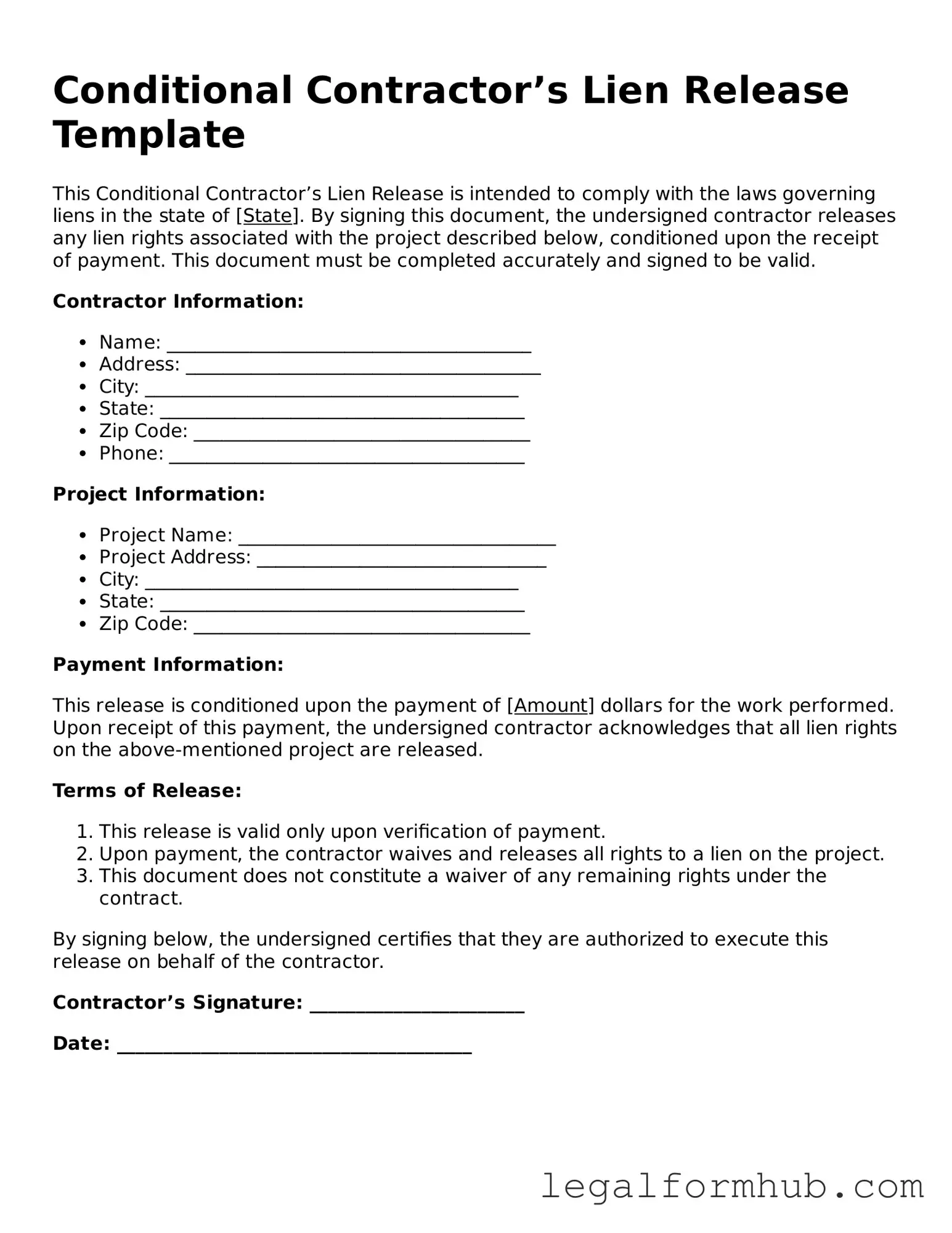The Conditional Waiver and Release of Lien is similar to the Conditional Contractor’s Lien Release form in that it serves to protect the interests of property owners and contractors alike. This document allows a contractor to waive their right to file a lien against a property, contingent upon receiving payment. The key difference lies in the specific parties involved; the waiver is typically used by subcontractors or suppliers rather than general contractors, making it crucial for managing the relationships among various parties in a construction project.
The Unconditional Waiver and Release of Lien also shares similarities with the Conditional Contractor’s Lien Release form. This document provides a complete waiver of lien rights, regardless of whether payment has been received. Once signed, it assures property owners that they will not face any future claims against their property for the work completed. This document is often used after payment has been made, offering a final confirmation that all obligations have been fulfilled.
Before engaging in any project, it's essential to have the necessary documents in place, such as the Missouri Release of Liability form, to ensure the safety and security of all involved parties. By signing this essential document, participants are aware of the risks associated with the activity and agree not to hold the organizer accountable for any injuries that may happen. To facilitate this important process, you may want to explore Missouri PDF Forms for the proper documentation.
The Notice of Intent to Lien is another document that bears resemblance to the Conditional Contractor’s Lien Release form. While the latter releases lien rights, the Notice of Intent to Lien serves as a preliminary step indicating that a lien may be filed if payment is not received. This document is typically sent to property owners and can prompt timely payments, thus avoiding the need for a lien release altogether. Both documents are integral in the communication process surrounding payment disputes in construction projects.
The Lien Release upon Payment is closely related as well. This document is executed after a contractor has received payment and serves to release any claims against the property. Unlike the Conditional Contractor’s Lien Release form, which is contingent on payment, the Lien Release upon Payment is unconditional. This ensures that once payment is completed, the contractor relinquishes any further rights to claim a lien against the property.
Lastly, the Affidavit of Payment is similar in that it provides a formal declaration regarding the payment status for work performed. This document is often used in conjunction with lien releases to affirm that all parties involved have been compensated for their services. While the Conditional Contractor’s Lien Release form focuses specifically on waiving lien rights, the Affidavit of Payment offers an additional layer of assurance regarding the financial transactions that have taken place in a construction project.
